Crystal Forms (original) (raw)
Go to Paper Models
Go to Other References
JCrystal
| Instructions for using JCrystalApplet (Thanks to Dr.Steffen Weber) and JCrystal | |
|---|---|
| Mouse Functions | Keyboard Bindings |
| note: for mouse actions you have to be over the applet area double click: stop/continue animation right mouse button click: 4 display modes -shaded -custom colors -wire frame -anaglyph mouse button drags: right mouse button: zoom crystal - on right side of window rotate crystal - on left side of window left mouse button: manipulate crystal - left mouse button zoom crystal - left mouse button + cntl | note: for keyboard actions you may have to click at the applet area first, to give it the keyboard focus character t transparency on/off SPACE stop/continue animation character s stereo on/off character i indices on/off character f fit to screen character L toggle shading on/off cursor keys (also +SHIFT) rotate crystal |
Paper Models
Steffen Weber has created a replacement version of JCrystal called KrystalShaper that can produce paper models of the example crystals on the crystallography section of Webmineral. Paper models for the 32 crystal classes and 7 crystal systems have been reproduced in .pdf format. These models can be printed on heavy card stock to construct a physical model. Please note: the paper model forms may be simplified from the JCrystal forms to avoid overly-complicated cut-outs.
Students may want to try and construct a physical model of the crystal forms for illustration purposes. These models will help teach symmetry operations needed to identify crystal forms. The student is encouraged to mark on the paper models noting mirror planes and rotational axes.
Link to paper model PDF files: Isometric Tetragonal Orthorhombic Hexagonal Trigonal Monoclinic Triclinic
Instructions:
- Select the paper crystal model by clicking on the thumbnail image. You may want to try the crystal system models first because of the simpler shape.
- Print in landscape mode on Heavy Paper Card Stock (60-70 lb/ream) for best results. You want paper about the thickness of a postcard. Use 8.5x11 or A4 size. For a larger model, you can use 11x17 or tabloid sizes if your printer can handle the larger paper sizes.
- Cut along lines using a sharp scissors or a blade cutter (Exacto� knife) on a cutting mat.
- Crease and fold the tabs and crystal faces along the pre-printed lines. Use an awl or mechanical pencil tip (with the lead retracted) to crease the paper along the lines.
- Test fold crystal form to check fit.
- Apply White Glue on Tabs, one pair at a time using Toothpick.
- Hold Tabs Together until Dry.
- Repeat for all Tabs.
| Crystal System | Class Name | AXES | Planes | Center | Paper Model forms (PDF Image) | |||
|---|---|---|---|---|---|---|---|---|
| 2 Fold | 3 Fold | 4 Fold | 6 Fold | |||||
Isometric 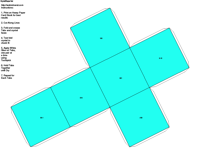 |
Tetartoidal | 3 | 4 | - | - | - | - | 23 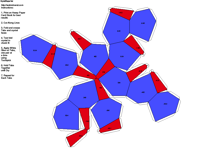 |
| Diploidal | 3 | 4 | - | - | 3 | yes | 2/m 3 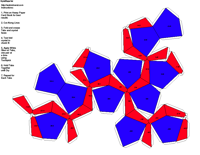 |
|
| Hextetrahedral | 3 | 4 | - | - | 6 | - | 4 3m 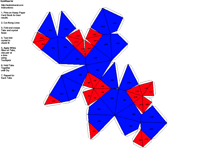 |
|
| Gyroidal | 6 | 4 | 3 | - | - | - | 432 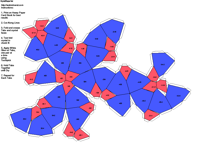 |
|
| Hexoctahedral | 6 | 4 | 3 | - | 9 | yes | 4/m 3 2/m 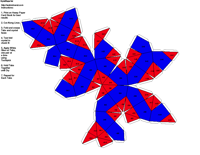 |
|
Tetragonal 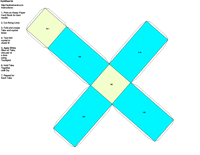 |
Disphenoidal | 1 | - | - | - | - | - | 4 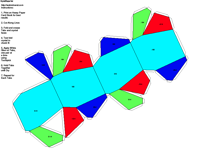 |
| Pyramidal | - | - | 1 | - | - | - | 4 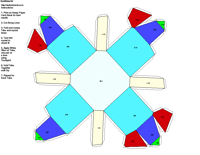 |
|
| Dipyramidal | - | - | 1 | - | 1 | yes | 4/m 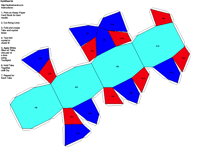 |
|
| Scalenohedral | 3 | - | - | - | 2 | - | 4 2m 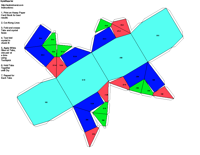 |
|
| Ditetragonal pyramidal | - | - | - | - | 4 | - | 4mm 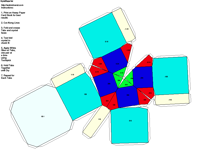 |
|
| Trapezohedral | 4 | - | 1 | - | - | - | 422 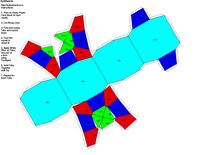 |
|
| Ditetragonal- Dipyramidal | 4 | - | 1 | - | 5 | yes | 4/m 2/m 2/m 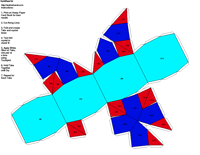 |
|
Orthorhombic 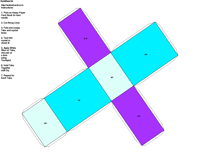 |
Pyramidal | 1 | - | - | - | 2 | - | mm2 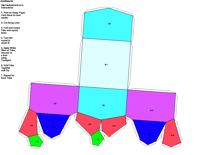 |
| Disphenoidal | 3 | - | - | - | - | - | 222 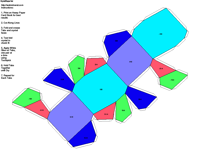 |
|
| Dipyramidal | 3 | - | - | - | 3 | yes | 2/m 2/m 2/m 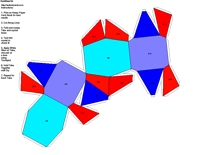 |
|
Hexagonal 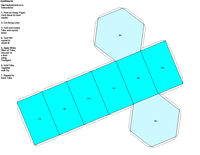 |
Trigonal Dipyramidal | - | 1 | - | - | 1 | - | 6 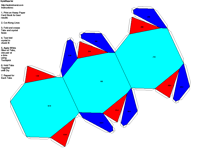 |
| Pyramidal | - | - | - | 1 | - | - | 6 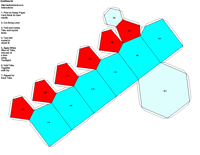 |
|
| Dipyramidal | - | - | - | 1 | 1 | yes | 6/m 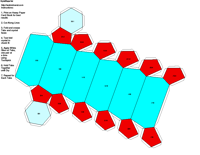 |
|
| Ditrigonal Dipyramidal | 3 | 1 | - | - | 4 | - | 6m2 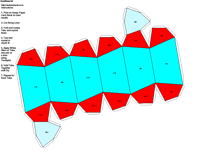 |
|
| Dihexagonal Pyramidal | - | - | - | 1 | 6 | - | 6mm 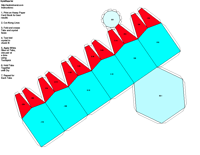 |
|
| Trapezohedral | 6 | - | - | 1 | - | - | 622 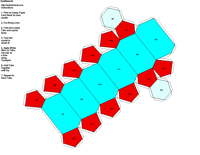 |
|
| Dihexagonal Dipyramidal | 6 | - | - | 1 | 7 | yes | 6/m 2/m 2/m 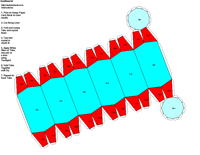 |
|
Trigonal 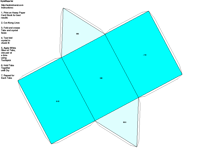 |
Pyramidal | - | 1 | - | - | - | - | 3 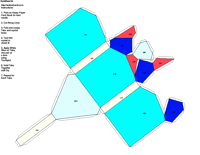 |
| Rhombohedral | - | 1 | - | - | - | yes | 3 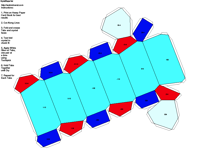 |
|
| Ditrigonal Pyramidal | - | 1 | - | - | 3 | - | 3m 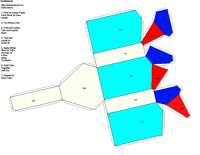 |
|
| Trapezohedral | 3 | 1 | - | - | - | - | 32 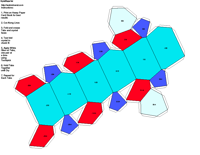 |
|
| Hexagonal Scalenohedral | 3 | 1 | - | - | 3 | yes | 3 2/m 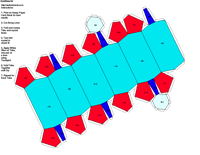 |
|
Monoclinic 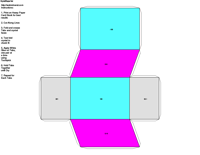 |
Domatic | - | - | - | - | 1 | - | m 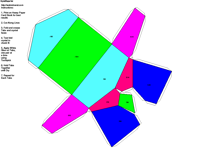 |
| Sphenoidal | 1 | - | - | - | - | - | 2 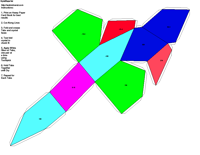 |
|
| Prismatic | 1 | - | - | - | 1 | yes | 2/m 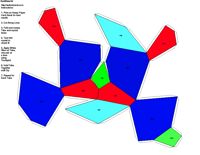 |
|
Triclinic 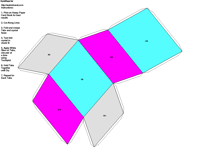 |
Pedial | - | - | - | - | - | - | 1 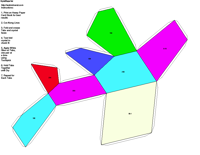 |
| Pinacoidal | - | - | - | - | - | yes | 1 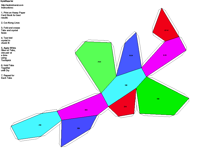 |
Other References to Crystal Forms
Here is an e-mail I received from Uwe Kolitsch on referencing brackets in mineral nomenclature.
Hi Uwe,
I was always a little fuzzy on the protocols for using ....[ { ( <..... in mineralogical references. Thanks for the pointers. They didn't teach this stuff in the dark ages when I took my mineralogy course. Or if they did teach it, there were too many years between then and now when I needed to use it.
This is important stuff and I need to pay more attention. Since webmineral is created from a database, all I have to do is modify the programs that create the "data" and "Java" pages. I also need to review the supporting pages in the crystallography section and be sure the brackets are correctly used. I will probably modify the help pages to clarify the information you kindly provided.
Thanks,
Dave
Hi Dave,
I noted that crystal forms and faces/planes on webmineral are incorrectly written (I hope my following advice is helpful):
Example1:
Schultenite - Cleavage: [010] Good
(should read: ... (010) Good or {100} Good)
Example 2:
Schultenite - Forms: [ 0 1 1] [ 1 2 1] [ 0 1 0] [ 1 4 0] [ 1 1 1] [ 1 3 0] [ 0 0 1]
(should read: Forms: {011} etc.)
There are some general rules:
- (Single) crystal faces/planes are written (...)
e.g. (110), (1-10) etc.- Crystal forms are written {...}
e.g. {100} in the cubic system comprises the set of the following 6 symmetry-equivalent faces/planes: (100), (-100), (010), (0-10), (001) and (00-1).- Directions in a crystal (zone axes) are written [...] [ uvw ]
e.g., [100] = direction along the a-axis- A set of all symmetry-equivalent direction is written <...> (e.g., <100> for halite = directions [100], [-100], [010], [0-10] etc.)
- [Note: d-spacings hkl are written without any parentheses (e.g., "the 311 reflection").]
see
http://www.gly.uga.edu/schroeder/geol3010/3010lecture06.html
http://www.rockhounds.com/rockshop/xtal/part7.html
http://www.stanford.edu/group/glam/xlab/MatSci162_172/LectureNotes/02_Geometry,%20RecLattice.pdf
Cheers, Uwe
*********************************************
Priv.-Doz. Dr. Uwe Kolitsch
Institut f�r Mineralogie und Kristallographie
Geozentrum, Universit�t Wien
Althanstr. 14
A-1090 Wien
Austria
Search the Mineralogy Database
Example Subject Searches
Example: forms 0-01 finds all minerals that have the 001 face.
note-forms are only applicable to minerals with java crystal forms
Search the Web
- Axial Ratios
- Borax Bead
- Chem Form
- Cleavage
- Color
- Chem
- Crystal System
- Crystal Form
- Dana Class
- Density
- Diaphaniety
- Dichroism
- Emperical form
- Environments
- Fermion
- Flame Tests
- Tenacity & Fracture
- Gladstone-Dale
- Habits
- IMA status
- Hardness
- JCrystal
- jmol Applet
- jPOWD Applet
- Locality
- Luminescence
- Luster
- Magnetic
- Name Origins
- Pronunciation
- Optical
- Phosphate Bead
- Pleochroism
- Radioactivity
- References
- Reflectivity (RL)
- (RL) Anisotrophism
- (RL) Bireflectance
- (RL) Color
- (RL) Pleochroism
- See Also
- Streak
- Strunz
- Synonyms
- Unit Cells
- What's New
- X-Ray